F7 Guitar Chord | How To Create and Play the F Dominant Seventh chord
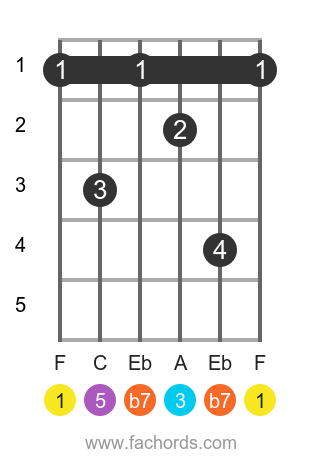
Welcome to our tutorial on the F 7 chord, a pivotal member of the Dominant Chords family. This chord, with its unique blend of notes - F, A, C, and Eb - is a staple in various music genres, especially in Blues and Jazz. The F 7 chord is constructed with a specific set of music intervals: the 1, 3, 5, and b7, also known as the Root, Major Third, Perfect Fifth, and Minor Seventh, respectively.
Understanding the music intervals that make up this chord is crucial for mastering its sound and application. If you're unfamiliar with these intervals, check out our comprehensive tutorial about fretboard intervals to learn more.
The F 7 chord belongs to the family of dominant chords, which are known for their tense and unresolved sound. This sound is created by the b7 interval, the Minor Seventh. To delve deeper into dominant chords and their role in music, visit our detailed tutorial about dominant (7) guitar chords.
In this tutorial, we will provide you with chord diagrams and fretboard patterns that illustrate the tones composing the F 7 chord. These visual aids will help you understand how the chord is built on the fretboard, making it easier for you to play it. If you're interested in learning more about how chords are built by stacking intervals, we recommend our tutorial that teaches how to build chords by stacking intervals.
Whether you're a seasoned guitarist or just starting out, understanding and mastering the F 7 chord can significantly enhance your playing skills, and open up new possibilities for your musical expression. So grab your guitar, and let's dive into the world of the F 7 chord!
Notes in the F 7 chord:
Tones of the Dominant Seventh chord:
F7 Chord Tutorial
Once again before we practice some different positions for F7 let’s take a look at what notes make this chord up.
Remember the notes for the F major scale are:
F G A Bb C D E
An F major triad or chord is made up of the root , major third , and fifth note of that scale, thus F major is:
F A C
Now an F7 is otherwise known as a dominant seventh , and to make a dominant seventh chord we use the formula; root, major third, fifth, and minor seventh.
So the F7 chord will be made up of the notes:
F A C Eb
As mentioned before there are multiple seventh chords that exist and the dominant seventh is the most important of all.
Where to use F7 dominant chord
The main function of the dominant seventh is to lead up to a tonic resolution.
For example, one very common place you will find dominant sevenths is in blues music and the seventh is often played right before the root or tonic chord.
The dominant seventh is often used in rock n roll, pop, and blues.
Try playing the progression:
Bb Eb F Bb
Now play:
Bb Eb F7 Bb
you will notice how different it sounds.
For experimenting further with chord sequences, you might find useful our chord progression generator tool
Keys with the F7 chord
The most common keys we will find with the F7 chord is the Keys of Bb, C, and F.
However you will also potentially find it in some more random places depending on where the songwriter was looking for some tension leading to resolution.
You will not see F7 as often as other sevenths, unless you are playing blues in the Key of C, and then you will have plenty of F7’s.
Chords in the key of Bb major
| Key | I | ii | iii | IV | V | vi | vii |
|---|---|---|---|---|---|---|---|
| Bb | Bb | Cm | Dm | Eb | F | Gm | Am/b5 |
Chords in the key of F major
| Key | I | ii | iii | IV | V | vi | vii |
|---|---|---|---|---|---|---|---|
| F | F | Gm | Am | Bb | C | Dm | Em/b5 |
Songs with the F7 guitar chord
- The old time tune " Lazy Bones" by Hoagy Carmichael and Johnny Mercer uses F7 along with a few other dominant seventh notes.
- "Moon River" also uses a ton of sevenths including F7.
It is chord often seen in pop and jazz standards and of course in lots of blues tunes.
How to play the F7 chord on the guitar
The picture below shows the F7 tones on the guitar fretboard:

Using the tones above we can come up with some of the more popular versions of how to play the F7 chord. Usually when we play a chord we want the root note (here F) to be the lowest played bass note.
Sometimes we will find a chord shape where that isn’t the case, which means the chord is an inversion.
If the lowest note is A, C, or Eb instead of the F than that is an inversion .
The most common position for F7 is the barred E7 chord .
A regular E7 is 020100 if we barre it and move it up one position we get 131211 :

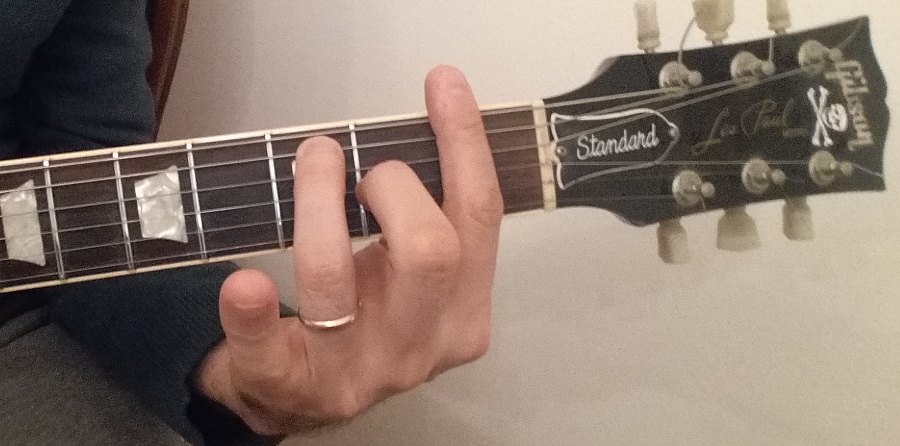
If you are not yet comfortable with barre chords another way to play F7 is XX3241 .

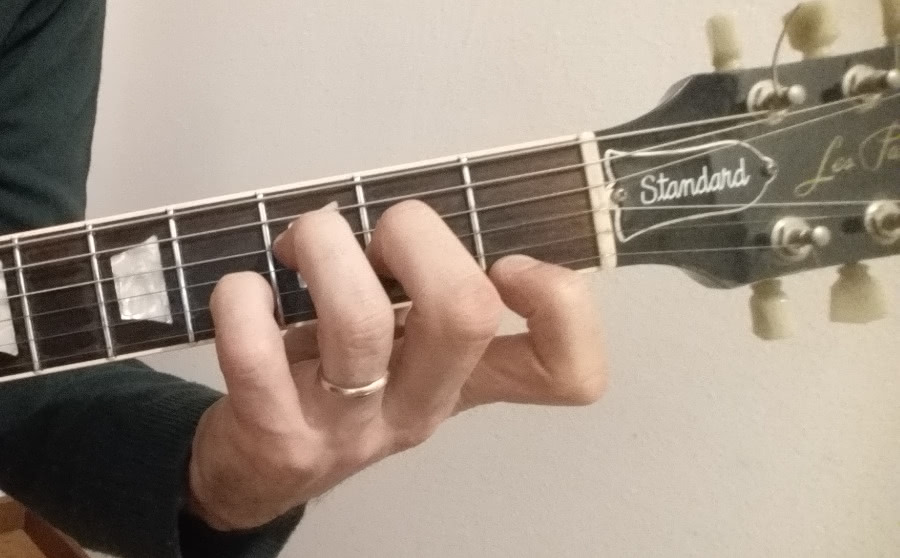
A three string version of F7 is X878XX , a rootless three string version is XXX545 (there is no F in that position just C, Eb, and A).

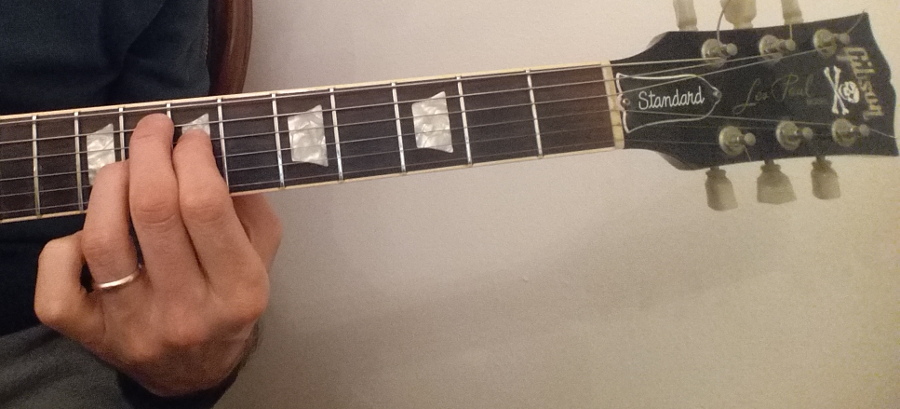
And a few complicated F7 chord shapes are 131241 (which is a tough barre chord) and 1X12XX which may be hard for people who aren’t that good at muting strings.

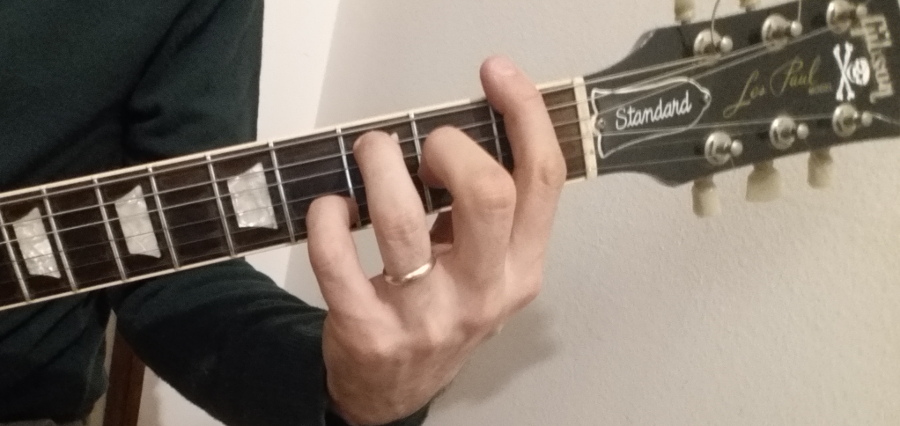

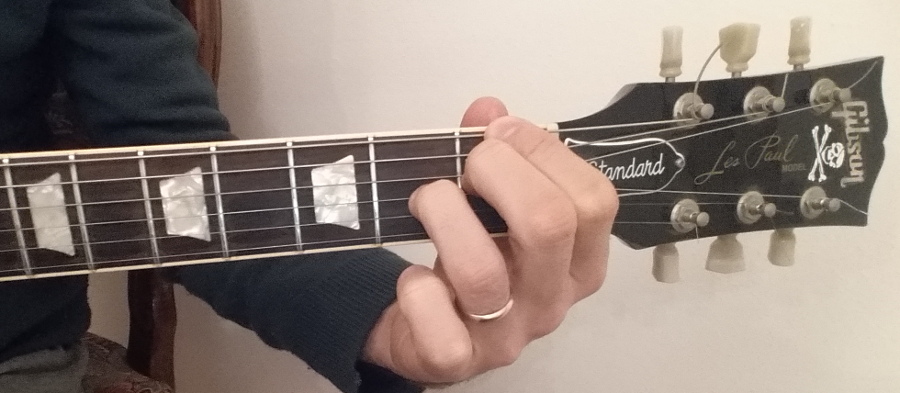
F7 Guitar Chord Diagrams
Chord boxes are sorted from the easiest to the hardest. Learn how to read chord diagrams.
If you have difficulties with bar chord shapes, check the Bar Chords Tips tutorial.
You can also use this accessible chords page with written diagrams instruction.
Position 1
Movable
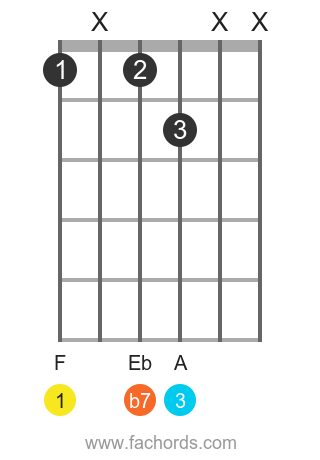
Position 2
Movable
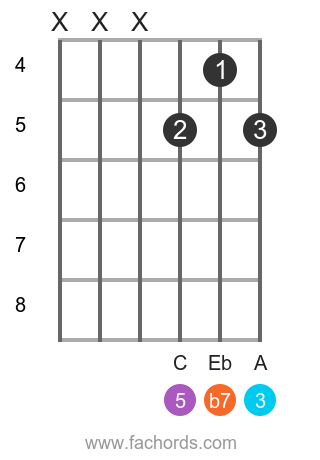
Position 3
Movable
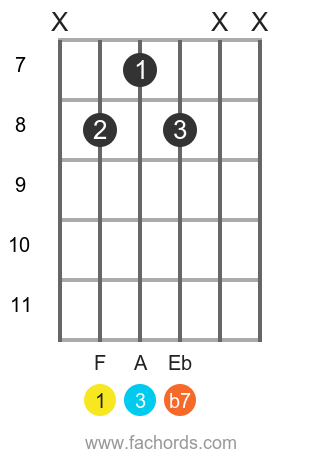
Position 4
Movable
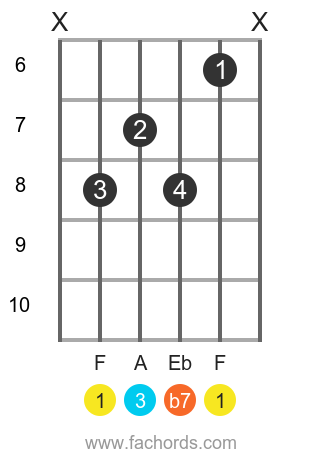
Position 5
Movable
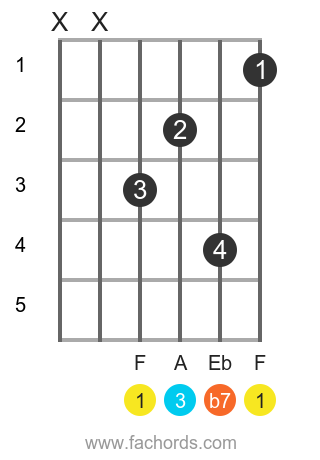
Position 6
Movable
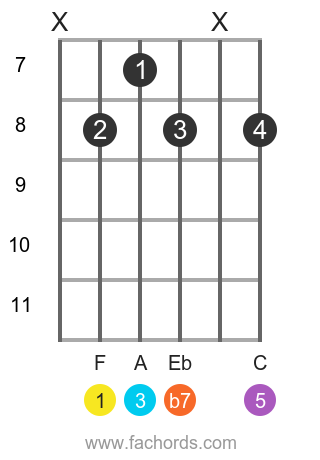
Position 7
Movable
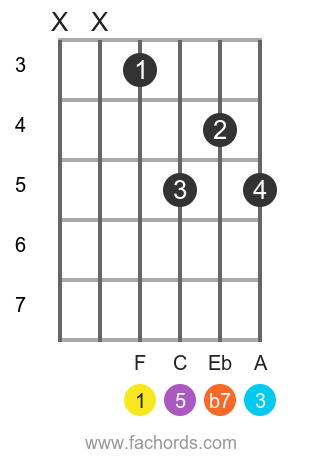
Position 8
Barre
Movable
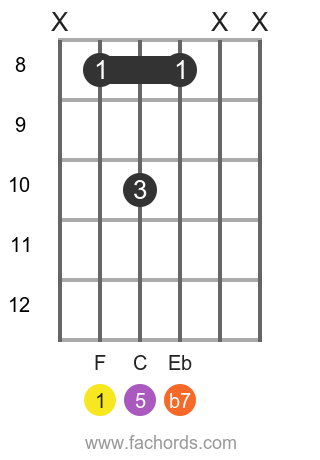
Position 9
Barre
Movable
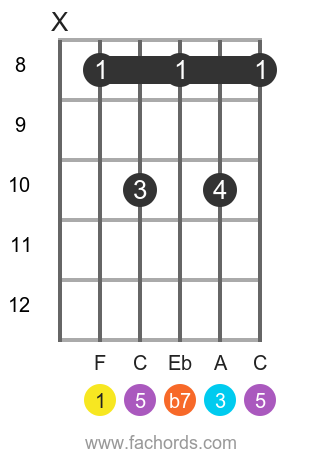
Position 10
Barre
Movable

Position 11
Barre
Movable
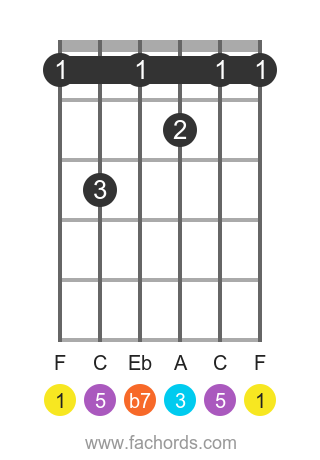
 You can find more shapes in our all guitar chords online library. If you
prefer a printable pdf, download
the Free Guitar Chords Chart Pdf
You can find more shapes in our all guitar chords online library. If you
prefer a printable pdf, download
the Free Guitar Chords Chart Pdf